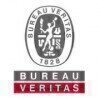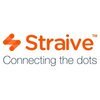
i
DNV
Filter interviews by
Clear (1)
DNV Senior Accountant Interview Questions and Answers
DNV Senior Accountant Interview Experiences
1 interview found

(1 Question)
- Q1. Those who are looking job in DNV must have all accounting concept clear knowledge, focus on revenue recognition, basic accounting entries, Accruals, prepayment, FA all accounting, leases, etc
(1 Question)
- Q1. Basic accounting
Top trending discussions






Interview questions from similar companies

Interview Questionnaire
7 Questions
- Q1. 2-3 Questions on my CV, my goals in life
- Q2. List all the relevant things if you were to float a tender for ordering tube lights if hypothetically you were the head of the engineering cell of your college ?
- Ans.
Relevant things to consider when floating a tender for ordering tube lights for the engineering cell of a college.
Quantity of tube lights required
Specifications of the tube lights (wattage, color temperature, length, etc.)
Budget allocated for the tender
Delivery timeline
Quality standards and certifications required
Supplier evaluation criteria
Payment terms and conditions
Warranty and after-sales support
Technical support a...
- Q3. You have 3 slices of bread, and a toaster. You can put in 2 slices of bread at a time. Each time, only one side of the bread gets cooked. How much minimum time is needed for cooking 3 slices on both sides ...
- Ans.
Minimum time needed to cook 3 slices of bread on both sides using a toaster with 2 slice capacity at a time.
Cook 2 slices on one side for the first round
Cook the third slice on one side for the second round
Cook the first 2 slices on the other side for the third round
Cook the third slice on the other side for the fourth round
Total minimum time needed is 4 rounds or 2 minutes
- Q4. You have 20 red balls, 14 blue balls. You draw out balls, 2 at a time. If they are of same color, add a blue ball the pile. If the are of different colors, add a red ball to the pile. (i) will the color of...
- Q5. From a deck of cards, you pick out one card at a time, 3 times, with replacement. What's the probability of getting a sequence, where a sequence is defined as consecutive integers drawn in any order ?
- Ans.
Probability of getting a sequence of consecutive integers from a deck of cards drawn 3 times with replacement.
There are 4 possible sequences: 2-3-4, 3-4-5, 4-5-6, 5-6-7
The probability of drawing any one of these sequences is 1/52 * 1/52 * 1/52 = 1/140608
The probability of drawing any sequence (in any order) is 4/140608 = 1/35152
- Q6. Same questions, without replacement
- Q7. I consider a domestic airliner, pull out all the seats, and fill it up with tennis balls. How many can I fit inside ?
Interview Preparation Tips
Experience: A basic aptitude test, with Quant, Verbal and LR
Tips: Cover the easiest questions first, from all the sections
Duration: 60 minutes
Total Questions: 60
Round: Technical Interview
Experience: It was a mix of HR+ Puzzles + Guesstimates based interview.
Goals in life:
Why EXL ?
Why not MBA?
How do you think you fit in here given your past internships ?
Tips: Know your CV inside out
LISTEN to the questions carefully, request you for a reiteration/reaffirm if need be.
I was sent to round 2 because of a slight lapse in listening.
Introspect, search deep inside for qualities which you think make you a fit for EXL
Round: Technical Interview
Tips: They test effective communication, structuring skills.
Keep it interactive, keep talking, elaborating in points to structure well!
General Tips: Confidence and attitude are the best things you can carry with you in an interview!
Obviously you should read up on the business they do before the interview
Its a hierarchical company with strict rules about phones, i cards etc
Skills: Presence Of Mind, Common Sense, Structuring your thoughts , Clear communication
College Name: IIT Guwahati

Business Analyst Interview Questions & Answers
EXL Serviceposted on 2 Dec 2015
Interview Preparation Tips
Experience: First round is a online test containing 10 verbal, 10 logical ,20 numerical aptitude questions total 40 question and duration is for 45 minutes
Round: HR Interview
Experience: 39 people got shortlisted for round 2. Round 2 is like hr interview all u need to do is speak and be confident
Round: puzzles round
Experience: 25 got shortlisted for round 3. Round has puzzles and gestimation questions. You need to clearly explain Guestimation question.
Round: HR Interview
Experience: 13 got shortlisted for final round. Its again Hr interview by all the company members. Out of 13 few were asked puzzles. Finally 10 people were selected.
General Tips: Placement experience was amazing. Interviews were really good . They just wanna check whether your confident about what you speak or not. Those people were really friendly so no need to be tensed.
Don't freak out looking at the new puzzle try thing new to solve it. Be confident about your self and what ever you tell them.Which ever quote u make about your self be ready with example and what you have learned from that example
Skill Tips: No book preparation is required. U need to be good at solving puzzles and explain what ever your doing. During test last section i.e., numerical will have few lengthy questions so don't waste your time on one question.
For Guestimation u have to make appropriate guess and explain them why that guess , how does things change in different environments
Skills:
College Name: NIT Surathkal

Interview Questionnaire
2 Questions
- Q1. Standard puzzles
- Q2. Standard HR questions -Tell me about yourself,Your family background.your future plans etc
Interview Preparation Tips
Experience: Standard CAT type questions but a level down from difficulty perspective.
Any standard CAT book will do for cracking the written test.
Tips: There is Sectional cutoff, so attempt each section giving equal weight.
Duration: 45 minutes
Total Questions: 40
Round: Technical Interview
Experience: The interviewer was a very chill guy.Before starting on to the puzzles he asked questions on the my resume , current affairs,sports,hobbies and then we had a long discussion on Arsenal (it was the club i supported).He also turned out to be an arsenal supporter,thus making the interview process ultra light.He just asked one puzzle and ended the interview process.
Tips: As i have a habit of daily reading a newspaper i was fairly acquainted with the current affairs and it helped me a lot.
Besides that, being a mechanical engineer i was questions about why not pursuing career in core engineering,so one should be prepared with all the answers.
Good communication skill will definitely help.
One should know one's resume inside out.
Round: HR Interview
Experience: The interview went out smoothly.He just want to check whether you are fit for the company.
Tips: Be confident and be yourself.Don't try to bluff.
Skill Tips: Don't worry about the placement process.Even if you fail don't loose your hope and carry on with your efforts,something bigger and better is waiting for you.
Skills: LOGICAL THINKING ABILITIES, Ability To Think, 1)communication, Ability To Analyse
College Name: NIT Surat
Motivation: After a year the company offers you the onsite project.

I applied via Campus Placement
Interview Preparation Tips
Experience: Based on whether you have experience in analytics, maths or programming.
Tips: If you're serious about EXL, work on a data science project, intern or take up a few courses in data science. Probability and Statistics is a 'must do course'.
Round: Test
Experience: Had 4 questions. One was based on probabilty, another was a puzzle, a data interpretation question and finally a case study question, involving a bit of guesstimate analysis.
Tips: Be strong in probability and puzzles. Do one or two cases with a friend while preparing for any kind of internship.
Round: Group Discussion
Experience: No group discussion
Round: HR Interview
Experience: I was asked about myself, my interest areas, the reason for applying for EXL. That was pretty much it
Tips: Be thorough and genuine with all kinds of HR questions
Duration: 2
College Name: IIT Madras

I was interviewed before Jan 2016.
Interview Preparation Tips
Experience: The test was easy.General aptitude test preparation should be sufficient.Prepare via Pariksha and Indiabix websites.Keep the time constraint in mind
Duration: 1 hour
Total Questions: 60
Round: Technical + HR Interview
Experience: The interview was concentrated on case studies and puzzles and general hr questions like Why EXL and Why analytics.EXL do not expect analytics background at all.You just have to do your interviews well.Communicate your ideas in case studies very clearly and precisely.
Tips: Case studies-Basic preparation that students do for consult companies.Follow Caseinterviewcracked book to get the basic flavour and then practice with friends
Puzzles-www.techinterview.com was very helpful followed by heard on the street book
Round: Technical + HR Interview
Experience: Very similar to previous round
College Name: IIT Madras

I was interviewed before Dec 2015.
Interview Questionnaire
4 Questions
- Q1. Tell us about yourself/resume
- Ans.
I am a highly motivated and experienced consultant with a strong track record of delivering successful projects.
Over 10 years of experience in consulting for various industries including finance, healthcare, and technology
Expertise in project management, process improvement, and data analysis
Proven ability to lead cross-functional teams and deliver results on time and within budget
Strong communication and interpersonal...
- Q2. Puzzles
- Q3. Case study question
- Q4. Puzzles What do you know about EXL Why consulting
- Ans.
EXL is a global consulting and analytics firm that helps businesses transform and streamline their operations.
EXL provides services in areas such as finance, healthcare, insurance, and more
They use advanced analytics and technology to drive business outcomes
Consulting allows for problem-solving and strategic thinking in a variety of industries
EXL's consulting services help clients improve efficiency, reduce costs, and
Interview Preparation Tips
Duration: 30 minutes
Total Questions: 30
Round: Technical + HR Interview
Experience: The interview started with a 'tell me about your resume' question and the interviewers built it up as a stress interview in the initial 5 min burst. After that, the interviewers opened up and tried to make me comfortable, asking me about my passions and interests. After a 5-7 minute discussion on this, they moved to puzzles. They asked me a mathematical puzzle of magic square and a logical puzzle. Further, they gave me a case to devise a strategy to market a Nokia phone(not a smartphone) in your city, viz and viz the target population, urban rural divide etc.
Tips: Be confident and think out loud while solving your puzzles. Even if you're not able to get to the correct answer, if your thought process is going in the right direction, they will guide you.
Round: Technical + HR Interview
Experience: In this round, the interviewer (a Senior Manager in the firm) wanted to ascertain that I had the requisite skillset in terms of my interaction capabilities to handle the role of a Consultant. He focussed on interacting with me whilst he had given me a puzzles or two, to see how I would deal with interacting with the client while problem solving.
Skills: Conversation Skills, Problem Solving Abilties, Basic Aptitude And Probability
College Name: IIT Kanpur

I was interviewed in Sep 2016.
Interview Questionnaire
2 Questions
- Q1. Number of guitars in n trichy
- Ans.
The question is unclear and lacks context. More information is needed to provide an accurate answer.
What is the context of the question? Is it related to a specific store or location?
What is the timeframe for the question? Is it asking for current inventory or historical data?
Are there any assumptions that can be made based on the information given?
Without additional information, it is impossible to provide an accurate
- Q2. About my experience as overall coordinator of festember
Interview Preparation Tips
Experience: Took parameters like college fests gana sabhas. And gave a figure
Round: HR Interview
Experience: Briefed abt the experience in detail which helped me win the trust

I was interviewed before May 2016.
Interview Questionnaire
1 Question
- Q1. Round 1: Both technical and HR questions. They were based on R, normal coding questions based on time series, binary search. Round 2: Purely technical questions. He was asked to explain the chemical engine...
Interview Preparation Tips
Experience: There were mainly quant,verbal,aptitude and logic questions. It was held on CoCubes
Duration: 45 minutes
Round: Resume Shortlist
Experience: CGPA plus Resume
Round: HR Interview
Experience: Same as above
Tips: Placement Prep was enough.
College Name: IIT Madras

I was interviewed in Aug 2016.
Interview Questionnaire
10 Questions
- Q1. Explain about ERP, it's advantages(a software which I worked upon during my internship)
- Ans.
ERP is a software that integrates various business processes and functions into a single system.
ERP stands for Enterprise Resource Planning.
It helps organizations streamline their operations and improve efficiency.
Advantages of ERP include centralized data management, improved collaboration, and better decision-making.
It automates processes like inventory management, financials, human resources, and customer relationsh...
- Q2. Explain DML, DDL, TCL(terms used in SQL)
- Ans.
DML, DDL, and TCL are terms used in SQL for manipulating and managing data.
DML (Data Manipulation Language) is used for inserting, updating, and deleting data in a database.
DDL (Data Definition Language) is used for creating, altering, and dropping database objects such as tables, indexes, and views.
TCL (Transaction Control Language) is used for managing transactions in a database, including committing or rolling back ...
- Q3. What are inner joins, outer joins, left join
- Ans.
Inner joins, outer joins, and left join are types of SQL joins used to combine data from multiple tables.
Inner join returns only the matching records from both tables.
Outer join returns all records from both tables, including non-matching records.
Left join returns all records from the left table and the matching records from the right table.
Example: INNER JOIN customers ON orders.customer_id = customers.customer_id
Exam...
- Q4. Some questions related to my branch I.e. Electronics but I don't remember
- Q5. Write an algorithm to optimize EXL interview process.
- Ans.
Algorithm to optimize EXL interview process
Identify key performance indicators (KPIs) for the interview process
Use data analytics to track and analyze the KPIs
Implement automation and AI to streamline the process
Incorporate feedback from candidates and interviewers to continuously improve the process
- Q6. My introduction
- Q7. Few questions on my hobbies
- Q8. What is big data
- Ans.
Big data refers to large and complex data sets that cannot be processed using traditional data processing methods.
Big data involves the collection, storage, and analysis of massive amounts of data
It requires advanced technologies and tools to process and make sense of the data
Examples of big data include social media data, sensor data, and financial market data
- Q9. Despite being ECE student, why business analytics post
- Q10. Why EXL
- Ans.
EXL offers a diverse range of projects and opportunities for growth, with a strong focus on innovation and technology.
EXL provides a wide variety of projects in different industries, allowing for diverse experience and skill development.
The company has a strong emphasis on innovation and technology, which aligns with my interests and career goals.
EXL has a reputation for providing excellent training and development pro...
Interview Preparation Tips
Experience: This round consisted of 40 questions and time limit was also 40 minutes. Since I was preparing for CAT, so I found this round quite easy, but since I was appearing for a job, hence pressure was there. Fortunately, I cleared this round with ease.
Tips: You can practice questions online. Indiabix.com is useful site for this. If you want to practice some advance questions, then refer to Arun sharma's books
Duration: 40 minutes
Total Questions: 40
Round: Puzzle Interview
Experience: I don't remember the exact questions which company officials asked, but this round was entirely based on puzzles. They asked 4-6 puzzles starting with easy ones and then level of difficulty increased. I solved first 4 puzzles. Last two puzzles were quite difficult and I remember I took 15-20 minutes to solve each. I was able to solve one but not other. Apart from this they also asked 1 guesstimate question. It was "how many litres of paint is required to paint the building of your college". I estimated the area of buildings and after 20 minutes gave a guesstimate answer. Impressed with my problem solving skills, I was eligible for the next round.
Tips: There are many online sites through which you can practice puzzles and IQ questions.
For guesstimate question you need to know certain details that might help you to solve the questions like
1. Population of india
2. Population of your state and city
3. Literacy rate
4. Sex ratio
5. Your college parameters
Round: Technical Interview
Experience: This round was technical round. I did internship on ERP software and Database management, so they asked a few questions on it. Then next was questions related to the subjects which I studied. Since I am not good at Electronics so I wasn't able to solve much questions. I feared that I might get eliminated now. Then they asked few questions from coding C, C++, Data structure. I solved them quickly. I guessed that saved me, and I got promoted for next round
Tips: One thing interviewers will definitely ask in this round is questions related to your subjects. So, if you good in your studies then you can easily clear this else you can prepare 2-3 subjects well. Rest technical questions will depend on your resume like apart from studies what additional knowledge you possess.
Round: HR Interview
Experience: The final round, "grand finale". I had given two interviews for internship and got rejected both times in final round. So, I was a bit tensed. I went there, the VP of the company was sitting there ready to fire questions upon me. But, I maintained my equanimity and gave appropriate answers and after 3 hours, my name was there among the list of selected students.
Tips: Prepare for the HR questions which is generally asked. And be ready for surprise questions they might ask from you. You have to be confident that's all and you can succeed with flying colours
Skills: Activeness Of Candidate, How Well Do You Speak When Your Mistakes And Weak Points Are Pointed Out, Clear Picture Of What You Want To Be In The Future, Big Data Analytics, Body Language In Interview, Electronics, Coding Skills And Knowledge On Data Structures, Puzzle Solving Capability
College Name: NIT Kurukshetra
Skills evaluated in this interview
DNV Interview FAQs
Recently Viewed
Tell us how to improve this page.
DNV Interviews By Designations
- DNV Information Technology Support Engineer Interview Questions
- DNV Business Development Executive Interview Questions
- DNV HR Operations Specialist Interview Questions
- DNV Junior Accountant Interview Questions
- DNV Auditor Interview Questions
- DNV Senior Accountant Interview Questions
- DNV Senior Manager Interview Questions
- DNV Senior Payroll Specialist Interview Questions
DNV Senior Accountant Interview Process
based on 1 interview
Interview experience
Interview Questions from Similar Companies
DNV Senior Accountant Reviews and Ratings
based on 5 reviews
Rating in categories
|
Accountant
29
salaries
| ₹0 L/yr - ₹0 L/yr |
|
Junior Accountant
23
salaries
| ₹0 L/yr - ₹0 L/yr |
|
Senior Accountant
21
salaries
| ₹0 L/yr - ₹0 L/yr |
|
Senior Engineer
9
salaries
| ₹0 L/yr - ₹0 L/yr |
|
Senior Consultant
9
salaries
| ₹0 L/yr - ₹0 L/yr |

Bureau Veritas

Intertek

SGS

TÜV NORD
- Home >
- Interviews >
- DNV Interview Questions >
- DNV Senior Accountant Interview Questions












